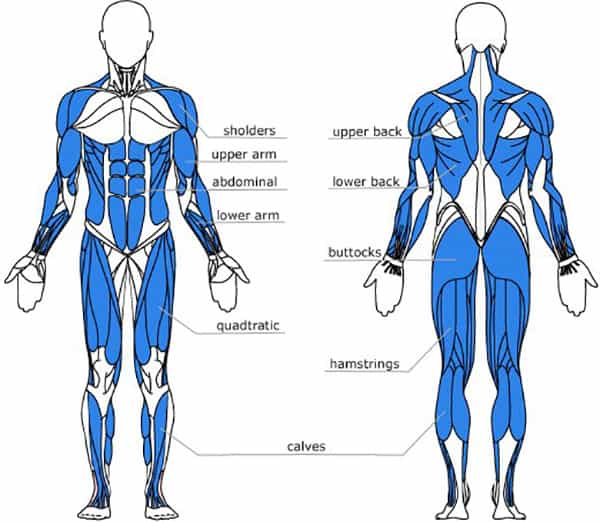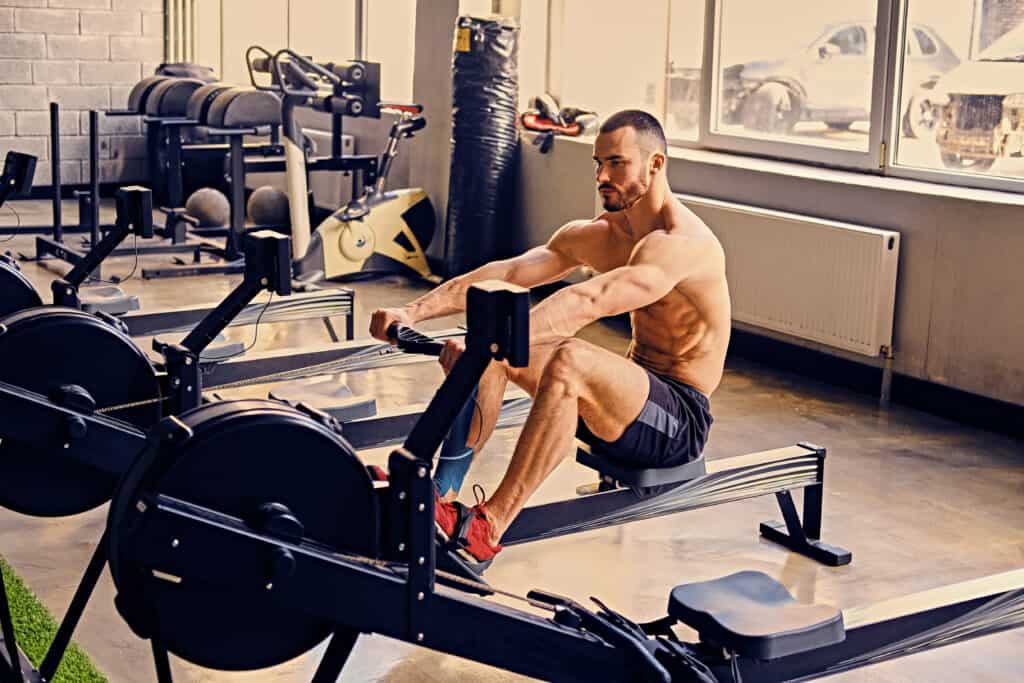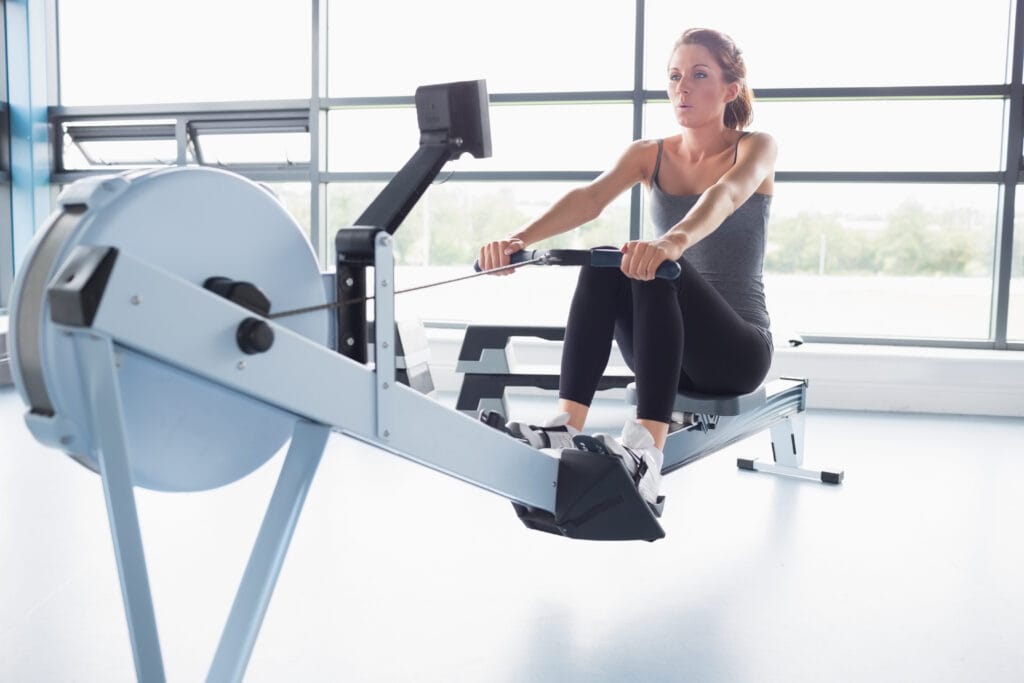There are many different cardio exercises to choose from when trying to build your workout. One of the best overall movements you can perform, though, is rowing. There is a reason why every CrossFit around the country has multiple ergs at their facility. From whatever stance you want to take, this exercise always comes out on top. Rowing makes for an efficient warm-up or cool-down as part of any workout. It is also a great pairing as part of any circuit or any interval program.
Muscle Groups Involved in Rowing
Rowing offers a very high calorie burn, increases work capacity, while building overall muscle strength and endurance. According to the English Institute of Sport, a rowing workout employs nine different muscle groups recruiting about 85 percent of your muscles. See the major muscle groups worked below (colored in blue).

Phases that Make Up a Stroke
There are four phases that comprise each rowing stroke. These include the catch, drive, finish and the recovery. Let’s look at the muscle group breakdown for each of these phases.
Catch
The catch is the beginning of a rowing stroke where the seat is all the way forward and you’re positioned close to the front of the machine. The catch phase uses the following muscles to perform the action:
- Deltoid
- Trapezius
- Serratus Anterior
- Erector Spinae
- Rectus Abdominus
- Hamstring
- Triceps Brachii
- Tibialis Anterior
- Gastrocnemius
Drive
The second phase of a rowing stroke is the drive. It begins by pushing off from the feet until your legs are almost fully extended. Any rowing coach will tell you that 70-75 percent of each stroke comes from the hips and legs. The remaining 25-30 percent comes from the arms and upper body. The drive incorporates two parts,(1) the body swing and (2) the arm pull through. The drive phase engages the following muscle groups:
A. The Drive (body swing emphasis)
- Brachialis
- Erector Spinae
- Quadriceps
- Gluteus Maximus
- Hamstrings
- Biceps Brachii
- Brachioradialis
- Gastrocnemius
- Soleus
B. The Drive (arm pull through)
- Trapezius
- Posterior Deltoids
- Teres Minor
- Brachialis
- Brachioradialis
- Extensor Carpi Ulnaris
- Flexor Carpi Ulnaris
- Latissimus Dorsi
- Pectoralis Major
- Biceps Brachii
- Quadriceps
The Finish
During this third phase, your core muscles are used to stabilize your body, while hinging slightly backwards at the hips. The finish ties it all together using the following muscle groups:
- Trapezius
- Posterior Deltoids
- Brachialis
- Biceps Brachii
- Brachioradialis
- Gluteus Maximus
- Latissimus Dorsi
- Forearm Extensors
- Quadriceps
Recovery
The final phase of a rowing stroke, the recovery, is the first three steps in reverse. The last phase pulls it all it together in one beautiful, rhythmic motion. The following muscle groups are targeted during recovery:
- Trapezius
- Rectus Abdominus
- Hamstrings
- Anterior Deltoid
- Triceps Brachii
- Wrist Extensors
- Gastrocnemius
Rowing is too good not to be part of your Jefit strength training program. Add it to your next circuit, or try doing some 500 meter splits (1:30 is considered a very good time) using the new Jefit cardio feature. When in need of a good, longer workout, time yourself doing a 2,000 meter row. If none of this gets you excited, use rowing as part of your warm-up before your strength training session.
Suggested Reading
Shepard R. Science and Medicine of Rowing. Journal of Sports Sciences, 1998, 16, 603-620.
Meiko A et al. Rowing as an aerobic and resistance exercise for elderly people. The Journal of Physical Fitness and Sports Medicine.
Andrew Hamilton BS, MRSC, Indoor Rowing for Bone Health
Ruth, W. Is 2,000 meter Rowing Anaerobic or Aerobic?
Website: Science of Rowing
Stay Strong Together
Jefit has a community that’s responsible for more than 92,500,000 workouts to date! The app, which recently passed 12.5 million downloads, comes equipped with an advanced customizable workout planner and training log. The app has ability to track data, offer audio coaching cues, and can share workouts with friends. Take advantage of Jefit’s exercise database for your strength workouts. Jefit was named best strength training app for 2024, by PC Magazine, Forbes, and Garage Gym Reviews. Visit our members-only Facebook group.
- The New Rules of Strength Training in 2026 - December 24, 2025
- Fibermaxxing: Viral Nutrition Trend You Should Know - December 17, 2025
- Hybrid Metabolic Strength Training for Faster Results - December 10, 2025

